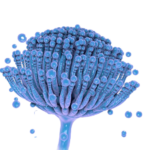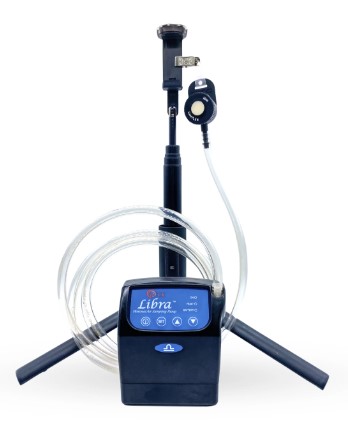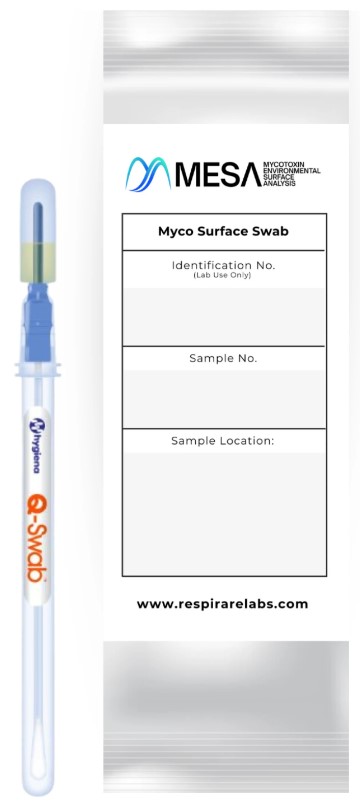Environmental Mycotoxin Testing for Chemical Mold Toxins
Environmental Mycotoxin Testing:
Take Charge of your Surface and Indoor Air Quality
Are you worried about toxic chemicals in mold? Our cutting-edge mycotoxin testing kits can contribute to making indoor spaces safer. Reach out to us right now.
- Determine which indoor mycotoxins are most prevalent and which ones present serious health risks.
- Check for mycotoxins in the air you breathe to determine how much you’ve been exposed to inhalation.
- You can rest easy knowing that mycotoxins have been brought down to safe levels in the air and on surfaces after mold cleanup.
- Utilize the findings to direct your healthcare provider’s healing conversation about hazardous mold exposure.
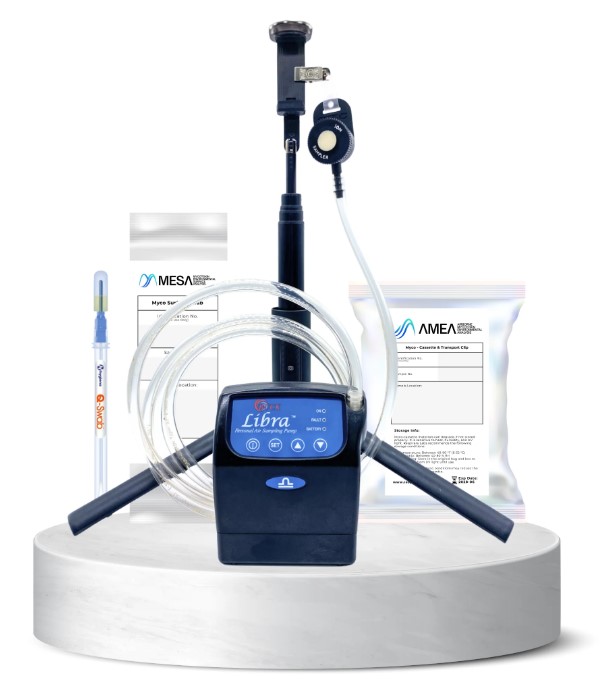
Mycotoxins Are Made by Molds
Mycotoxins are chemical byproducts produced by molds that are used as a defense against other molds and fungi that are vying for the same resources in the same environment. These mycotoxins have the ability to stick to surfaces in your house and spread throughout the air.
Mold Spores vs. Mycotoxins
Mycotoxins and mold spores are not the same thing. Due to their biological makeup, mold spores can mimic the symptoms of allergies such as hay fever. Mycotoxins are chemical poisons that can cause a range of health problems, from minor illnesses to serious diseases like cancer.
How Can Mycotoxin Testing Enhance Indoor Air Quality?
The Advantages of Mycotoxin Testing: Securing Surfaces and Safe Air
Safeguard Your Health:
Mycotoxins can cause serious brain consequences, including neurologic and neuropsychiatric signs and symptoms. As such, testing for them can help protect you and your family from cancer.
Take Control of Your Air Quality:
Although inhaled mycotoxins pose a major health risk due to their direct entry into the bloodstream, mycotoxin air testing can identify their presence and help determine the best course of action for mold removal.
Post-Remediation Verification:
Mycotoxin testing, both surface and air, can verify that mold remediation was successful in eliminating mold-produced mycotoxins from your area.
Lingering Mycotoxins:
Mycotoxins can linger in buildings long after mold removal efforts have been completed, creating health dangers that underscore the significance of testing for and removing mycotoxins.
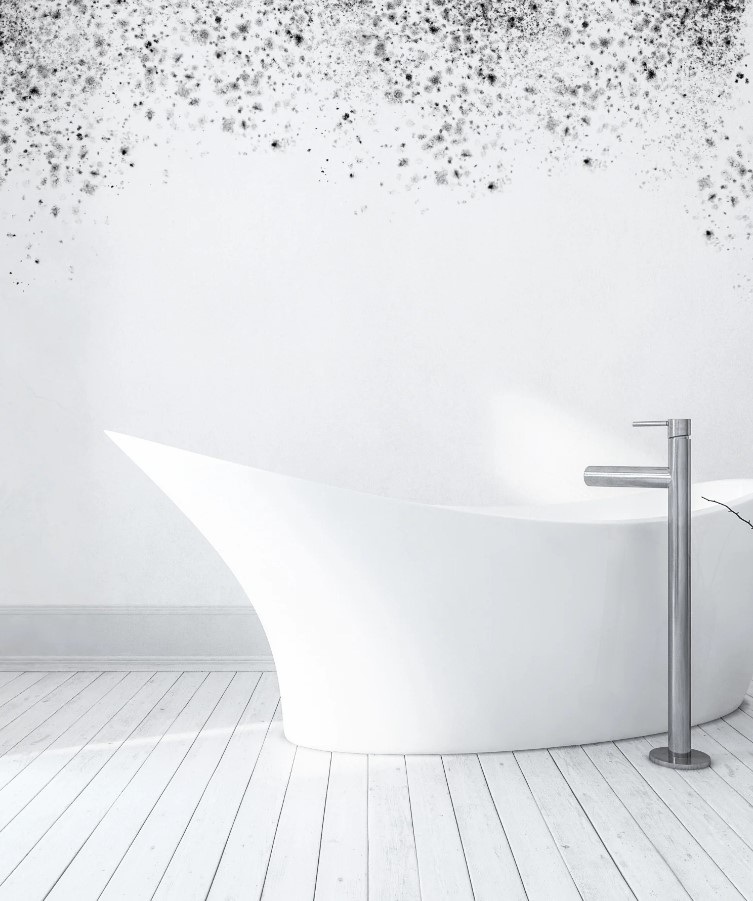
The Advantages of Integrating Spore Trap and Mycotoxin Testing
Recognizing the Differences Between Spore Trap and Mycotoxin Testing
Mycotoxin Testing
Description: A method and technique designed to capture, detect, and measure mycotoxins in indoor environments.
Objective: To identify the most dangerous chemical byproducts of mold that exist in both the air and on surfaces within indoor environments. This can be useful in evaluating the potential health risks and aid in taking measures to remove them.
Use both spore trap testing and mycotoxin testing when evaluating the health of your indoor environment. While spore trap testing detects the type of mold present, mycotoxin testing determines toxic chemicals produced by active or previously active molds that can heavily endanger your well being. By incorporating these two testing methods you can obtain a more comprehensive evaluation of your home or buildings quality and safety.
Air and Surface Mycotoxin Testing

Airborne Mycotoxin Environmental Analysis (AMEA)
AMEA mycotoxin air test can now be used to examine air quality issues brought on by harmful mold and the airborne mycotoxin byproduct it produces. Thanks to Respirare Labs’ innovative patented extraction technology and ELISA (Enzyme-Linked Immunosorbent Assay), a ground-breaking new test, the assessment of mycotoxins in the air has reached a new level of precision, accuracy, and uniformity. Contact us right now to ensure the quality of the air within your home.

Mycotoxin Environmental Surface Analysis (MESA)
Are mycotoxins on indoor surfaces causing you concern? Request a MESA mycotoxin surface test from Respirare Labs by contacting us.The most prevalent mycotoxins can be found on a variety of surfaces, such as walls, furniture, and HVAC systems, using MESA mycotoxin surface testing. Enzyme-Linked Immunosorbent Assay (ELISA) and our special extraction technique make it simple to test surfaces and guard against coming into contact with dangerous toxic mold byproducts.
Air and Surface Mycotoxin Testing Panel
| Aflatoxin B1, B2, G1, G2 | ✔️ |
| Ochratoxin A | ✔️ |
| Trichothecenes T2, HT2 | ✔️ |
| DON (Vomitoxin) | Upon Special Request |
| Zearalenone | Upon Special Request |
| Fumonisin | Upon Special Request |
Mycotoxin Air Testing: The Science Behind The Process
Active Sampling
Prior to AMEA sampling, the air in the room is conditioned to simulate normal activity by stirring it up prior to testing. This helps to provide consistent results and replicate what you would actively inhale.
Patented Process
Respirare Labs, the developer of the mycotoxin air test AMEA, uses a patented extraction process to prepare samples for industry-standard ELISA tests. Enzyme-Linked Immunosorbent Assay (ELISA), is a highly recognized form of analysis commonly used for the identification and quantification of mycotoxins.

The Breathing Zone
Samples for AMEA testing are collected at a height of 5ft from the ground, which is commonly referred to as the “breathing zone”. This method ensures that the samples accurately represent the mycotoxins that could potentially be inhaled.

Reports
AMEA mycotoxin testing relies on thorough research conducted by Respirare Labs, which has established average background levels for indoor airborne mycotoxins. Your test results are then compared against these established levels and reported in parts per billion (ppb) per cubic meter for better interpretation.
Mycotoxin Surface Testing: Essential Use Cases
Furniture
After experiencing mold or water damage, it’s crucial to ensure that your furniture is free from any residual mycotoxins and safe to use. MESA mycotoxin surface testing can be trusted to provide this assurance and determine whether a cleaning solution is needed to maintain the furniture’s quality.
Post Remediation
The MESA mycotoxin surface test is highly recommended for post-remediation purposes. Although it can be beneficial to check your surfaces before remediation to identify the risks, it is more practical to use this test after mold remediation to ensure that there is no longer any risk of mold-produced mycotoxins.

Walls
To ensure thorough mold remediation, it is highly recommended to obtain a wall sample from where the mold was present previously to check for any remaining mycotoxins. This extra step can help ensure the safety and health of your surfaces.

HVAC Systems
Did you know that HVAC systems might be spreading mycotoxins in your home or building? These toxins can easily travel through the system and contaminate the air you breathe. One way to check if your HVAC system needs cleaning or if it’s actively contributing to the spread of mycotoxins is by getting a Respirare Labs MESA swab of your return air duct.
Interested in Environmental Mycotoxin Testing?
If you have any questions about AMEA and MESA mycotoxin testing in the Tidewater Region of Virginia, feel free to call 757-932-2772 or get in touch with us. We’ll be happy to assist you.








